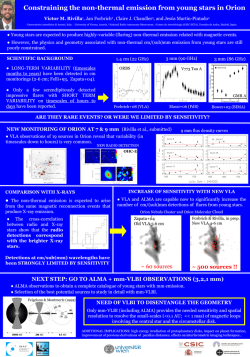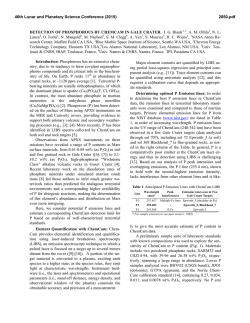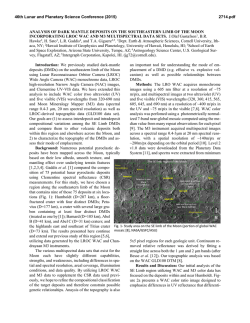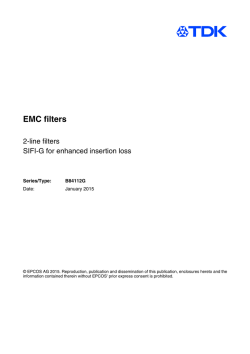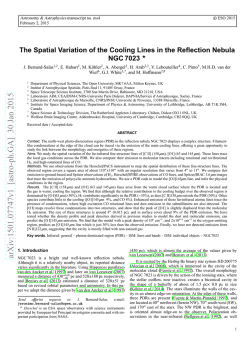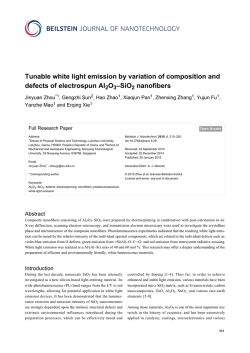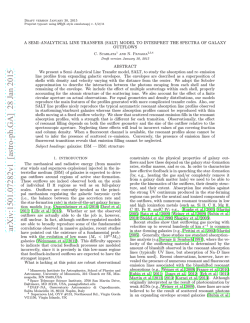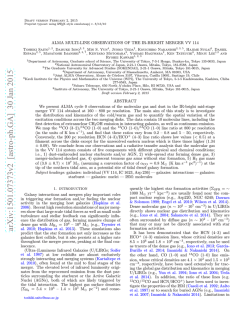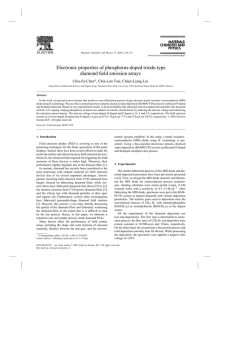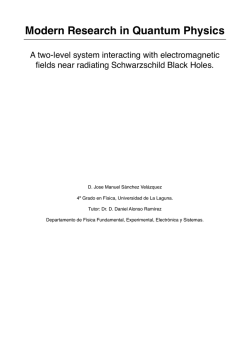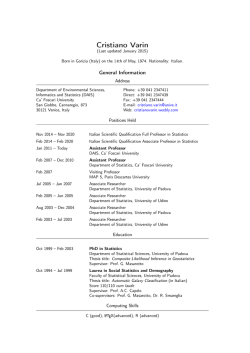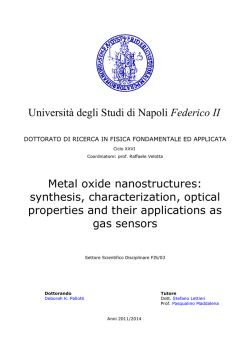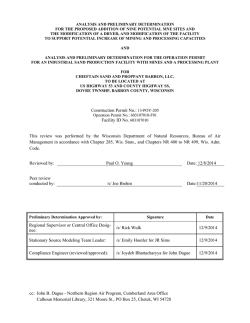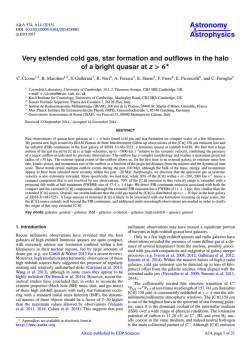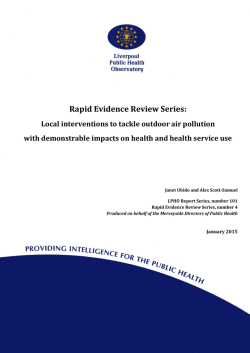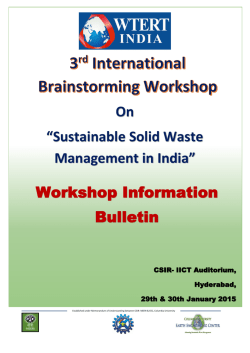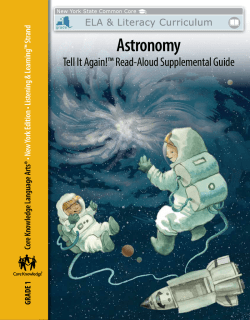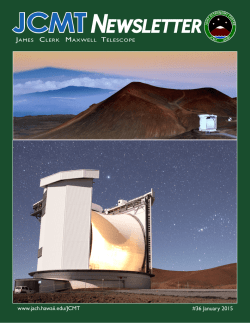
2347
46th Lunar and Planetary Science Conference (2015) 2347.pdf Imaging the Gas from 67P/Churyumov-Gerasimenko. M. F. A’Hearn1, J. Agarwal2, J.-L. Bertaux3, D. Bodewits1, G. Cremonese4, B. Davidsson5, S. Fornasier6, C. Güttler2, J. Knollenberg7, F. La Forgia8, L. Lara9, M. Lazzarin8, C. Leyrat6, Z. Lin10, S. Magrin8, G. Naletto11, H. Sierks2, C. Snodgrass12, N. Thomas13, C. Tubiana2, and J.B. Vincent2, 1Department of Astronomy, University of Maryland, College Park MD 20742-2421 USA, [email protected], 2MPS, Justus-von-Liebig-Weg 3, Göttingen 37077 Germany, 3LATMOS, CNRS/UVSQ/IPSL, 11 boulevard d'Alembert, 78280, Guyancourt, France, 4INAF, Osservatorio Astronomico di Padova, Vicolo 5 dell'Osservatorio 5, 35122 Padova, Italy, Department of Physics and Astronomy, Uppsala University, Box 516, 6 75120 Uppsala, Sweden, LESIA-Observatoire de Paris, CNRS, Université Pierre et Marie Curie, Universite ParisDiderot, 5 place J. Janssen, 92195, Meudon, France, 7Deutsches Zentrum für Luft- und Raumfahrt (DLR), Institut für Planetenforschung, Rutherfordstrafle 2, 12489 Berlin, Germany, 8University of Padova, Department of Physics and Astronomy, Vicolo dell'Osservatorio 3, 35122 Padova, Italy, 0Instituto de Astrofisica de Andalucia (CSIC), c/ Glorieta de la AstronomÌa s/n, 18008 Granada, Spain, 10National Central University, Graduate Institute of Astronomy, 300 Chung-Da Rd, Chung-Li 32054 Taiwan, 11University of Padova, Department of Information Engineering, Via Gradenigo 6/B, 35131 Padova, Italy, 12Planetary and Space Sciences, Department of Physical Sciences, The Open University, Milton Keynes, MK7 6AA, UK, 13Physikalisches Institut der Universität Bern, Sidlerstr. 5, 3012 Bern, Switzerland. Introduction: The OSIRIS Wide-Angle Camera (WAC) on the Rosetta orbiter includes narrow-band filters to image gaseous emission by CS, OH, NH, CN, NH2, Na, and [O I]. The WAC also includes filters to isolate the cometary continuum between the various emission features [1]. The data processing to obtain an image of the gas is very sensitive to the absolute calibration of the surface brightness in the images but also on the reflectivity spectrum of the grains producing the continuum. Furthermore, the filters vary considerably in their ability to isolate single emission features. The data are processed through the OSIRIS pipeline processing system to provide geometrically corrected, absolutely calibrated (radiance, i.e., surface brightness) images in each filter. Subsequent processing is done with the procedures described in [2] for the filters of the International Halley Watch (IHW), with appropriate modifications for the differences in filters between OSIRIS and IHW. Solar colors are obtained from observations of the solar analog 16 Cyg. Note that all species observable in the visible are fragments of the parent molecules in the nucleus. Thus in general the emission is expected to be much flatter spatially than that of parent molecules. However, the [O I] emission is prompt emission in the dissociation of parent molecules so it traces the spatial distribution of parents. The quality of the data varies considerably from one emission band to another and we will focus on the recent data (inside 3 AU), particularly including the [O I] filter. Since physical conditions in the innermost cometary coma at large helicocentric distance are very different from those normally encountered in Earth-based observations of comets, one has to consider physical processes that are not important for typical Earth-based observations. The forbidden red line of O (λ6300Å, 1 D-3P) is produced as one of the possible branches in the photodissociation of H2O and was originally used with ground-based spectra to track the H2O in comets. However, the line can also be formed in the dissociation of CO and CO2, as discussed, e.g., in [3]. Furthermore, there is emission by NH2 very close to the [O I] line, which is negligible in a sufficiently narrow filter but not so in the OSIRIS WAC filter. Furthermore, in the innermost coma at these large heliocentric distances, electron impact processes may be important as seen in data from ALICE [4] and sputtering by higher energy particles may be important as seen in data from ROSINA [5]. The key result of the images will be to associate the gaseous abundances with the dust jets that are seen, initially arising from the neck of the comet but later seen above many different locations on the limb. We will also present overall production rates (when the FOV is sufficiently large) and temporal variations. Acknowledgements: The OSIRIS camera team was supported by a very large number of national funding agencies in addition to the support from ESA for flying the mission. References: [1] Keller, H. U. et al. (2007) Space Sci. Rev. 128, 433-506. [2] Farnham, T. L., et al. (2000) Icarus 147, 180-204. [3] Decock, A. et al. (2015) A&Ap, 573, A1. [4] Feldman, P. et al. (2014) AGU Fall 2014 Mtg, P33F-03. [5] Altwegg, K. et al. (2014) AGU Fall 2014 Mtg., P32B-01.
© Copyright 2025
